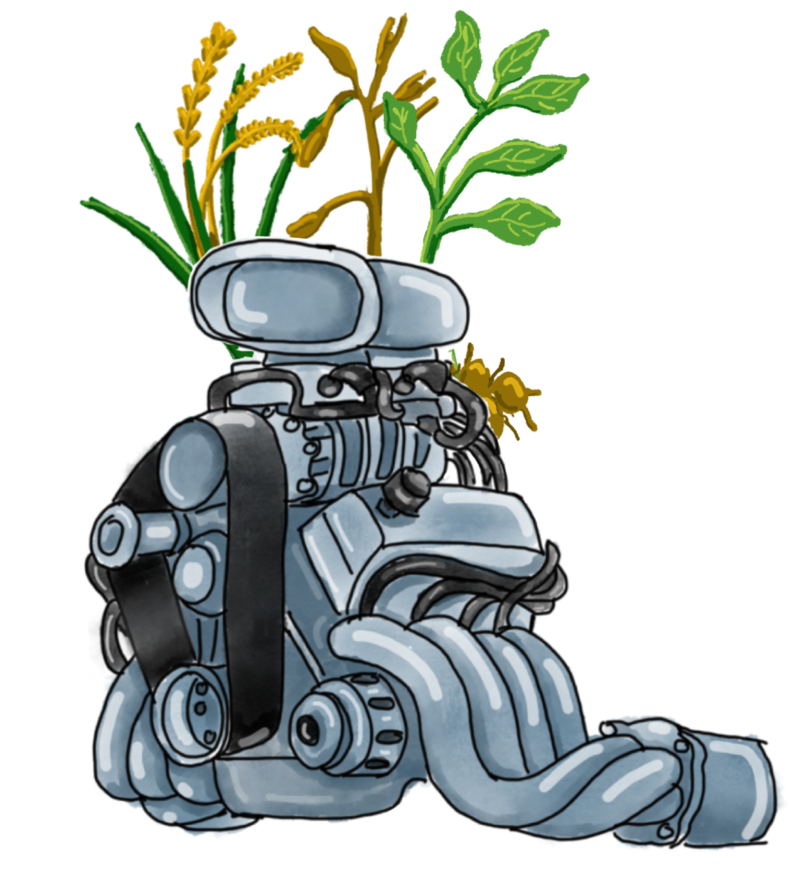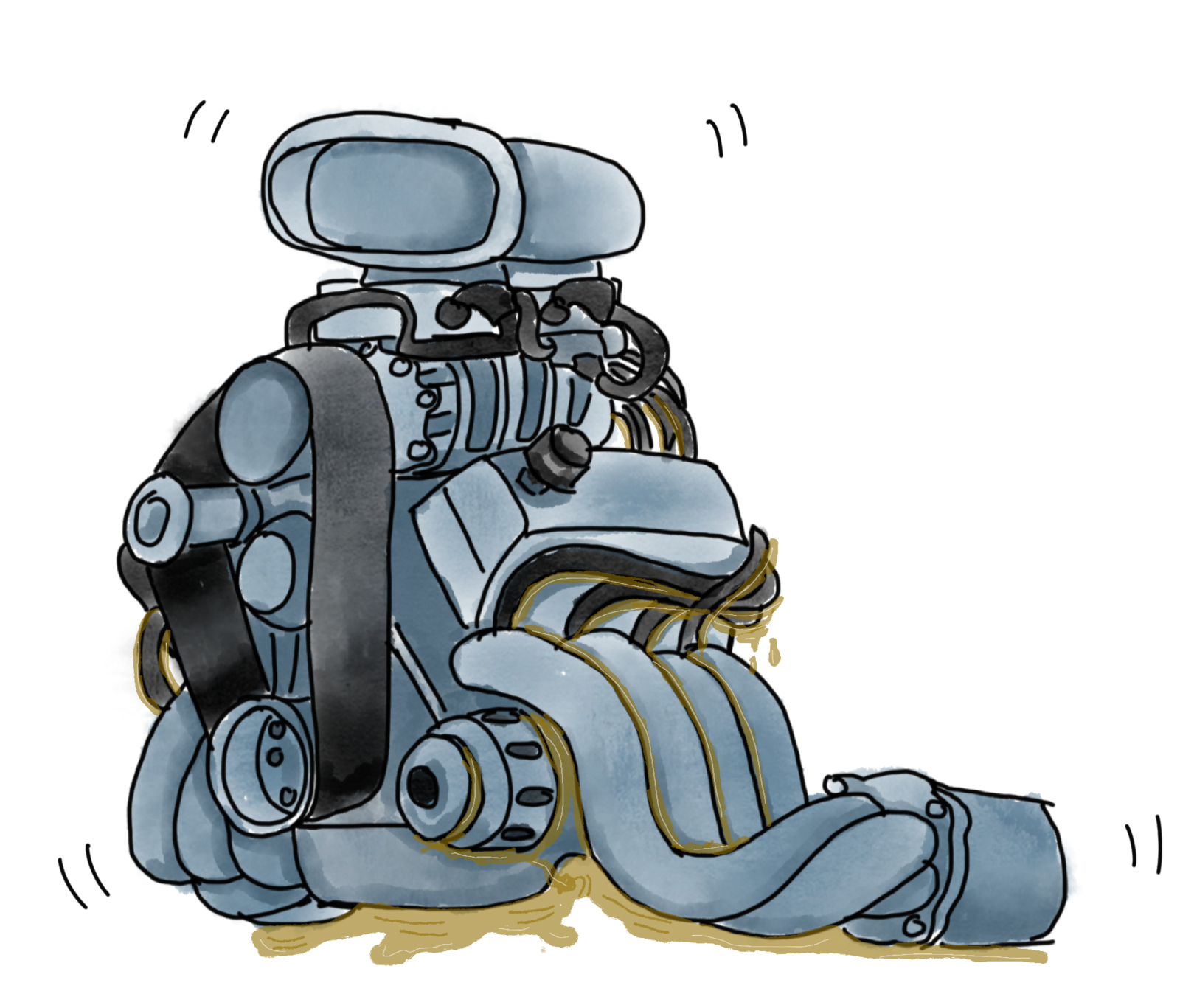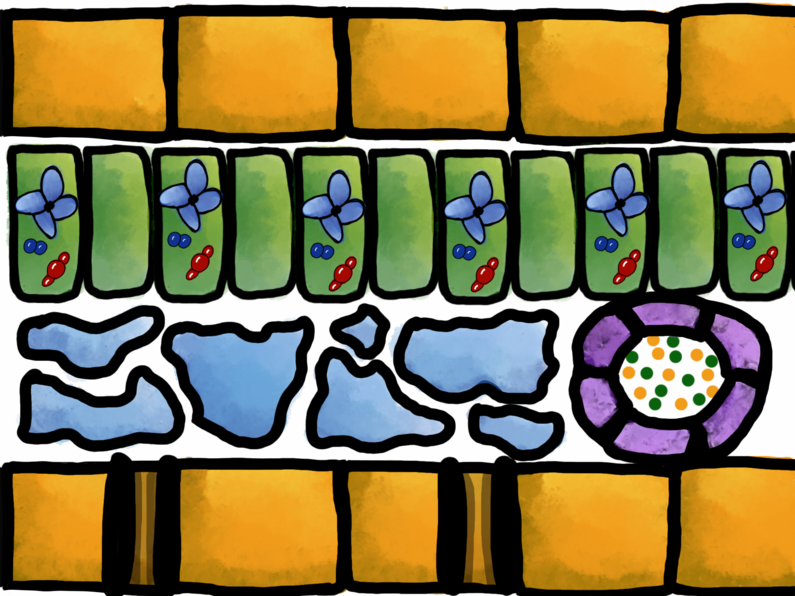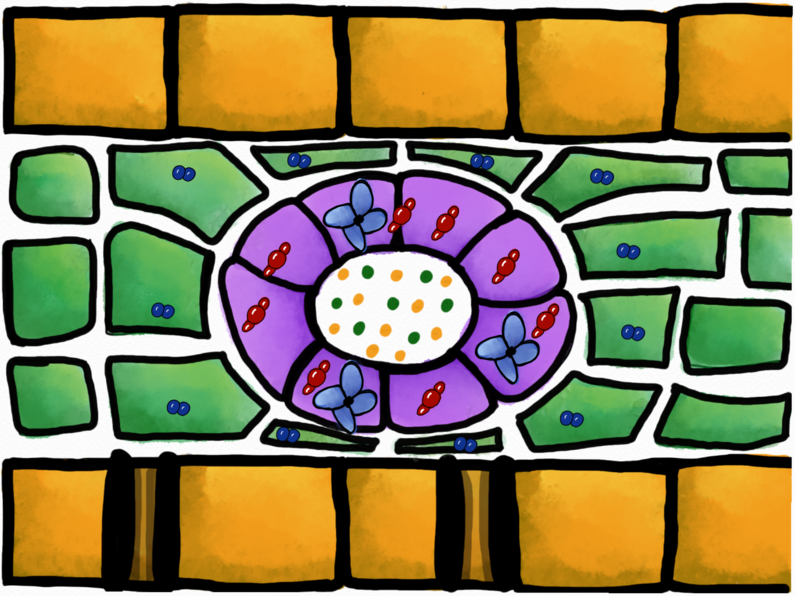About Rubisco, the Spluttering Motor of Photosynthesis
Photosynthesis is the process of converting sunlight and carbon dioxide into energetic molecules like sugars. All plants use the mechanisms of photosynthesis, and most plants perform a type called C3 photosynthesis. However, this type is prone to accidentally react with atmospheric oxygen, which hinders the fixation of CO2 and leads to the production of a molecule highly toxic for the plant. To understand how we can make a plant less vulnerable to, we have to understand the evolutionary mechanisms that formed photosynthesis.

Evolution and a car engine
Imagine how a car is built: some engineers sit around a table and discuss the development of a brand-new type of car motor. They collect data, discuss specifications and simulate each part‘s behavior. The process of designing a new car engine is a rational approach, where specifications are fixed, and each part is designed to meet its expectations.
But how would nature create such a motor? Evolution would build each part of our motor randomly, rather by advancing existent parts than designing new parts from scratch. Then, the parts are randomly integrated into a machine. If the motor does not work, it is trashed. But if it works, it will be subject to further random changes and development.
The mechanisms that make up organisms such as land plants are way more complex than a car engine. And yet, they arose over billions of years of evolution, where they were randomly assembled and selected. You will now get the notion that evolution does not care too much about maximizing efficiency. Evolution‘s scope is tight, as it mostly redesigns existent mechanisms and has to care much for selective benefits, so drastic changes to a system are unlikely. So, evolution would not simply develop a brand new, much more efficient engine ready to use in next year‘s car series, it would rather improve the motor screw by screw and cam by cam.
Photosynthesis is the engine of a plant – and it’s cranky
Let’s get chemical: In the case of photosynthesis, the central carbon-assimilating enzyme Rubisco (short for ribulose-1,5-bisphosphate-carboxylase-oxygenase), we can see an intriguing example of how evolution can trap itself in not-so-efficient results. Rubisco is the central crankshaft of the photosynthetic motor and certainly the most abundant protein on earth. Yet, it features some drawbacks. The main function of Rubisco is to fix the carbon dioxide (CO2) present in the atmosphere to build up sugar molecules such as glucose. Unfortunately, on every fifth reaction Rubisco confuses carbon dioxide with oxygen (O2) and uses the latter for it’s reaction. Rubisco’s false reaction with oxygen, called oxygenase activity, leads to the production of a highly toxic molecule, which the plant has to detoxify under great energy expenses in process named photorespiration. To keep the error rate low, Rubisco works extraordinarily slow, only fixing 1-10 molecules of CO2 per second. Photosynthesis, the motor of the plant, coughs and sputters.

The ancient earth – where Rubisco was born
Why is Rubisco so error-prone? Why did nature not purge out Rubisco or replace it with a more efficient mechanism of CO2 fixation? To find the answer, we have to travel back in earth history. Far back. 3 billion years ago, because that’s when Rubisco was “born“. Earth’s conditions 3 billion years ago hardly resemble nowadays conditions. With a 300 to 600-fold higher CO2 concentration in the atmosphere, Rubisco never had to deal with an accidental oxygen reaction. No costly photorespiration was needed to detoxify the results of Rubisco confusing CO2 with O2. Rubisco was “designed“ by evolution to meet the conditions of the young earth, that looked totally different than today. Today, we are living in an atmosphere that is comprised of 21 % atmospheric oxygen and Rubisco is having a much harder time to distinguish between oxygen and carbon dioxide. Much of the plant’s energy is therefore “wasted“ to deal with the toxic products of Rubisco’s oxygenation reaction. Energy that ideally would be used for growth, defense and other mechanisms. Especially under hot and dry climate, when plants close their leaf openings, the CO2 concentration decreases in the leaf, and more oxygen is falsely bound by Rubisco.
For some plants, evolution came up with a redesign of the photosynthetic motor. As we learned, evolution cannot completely redesign existing core features of an organism, but slowly improve them. The new versions of the photosynthetic motor are known as CAM photosynthesis and C4 photosynthesis. Let’s focus on C4 photosynthesis:


C4 species – teamwork for more efficient photosynthesis
C4 plants split the work of CO2 fixation using two different cell types: in the mesophyll cells, CO2 is “pre-fixed“ in form of a four-carbon molecule (that’s where the name C4 photosynthesis originates!). This molecule serves as a “shuttle“ and is transported to the adjacent bundle-sheath cells, where Rubisco is present. Here, CO2 is released from the C4-molecule again. By this, the plant creates an elevated CO2concentration around Rubisco. It is now far more likely that Rubisco will react with CO2 instead of oxygen and the C4 plant has to spend much less energy to remove toxic byproducts.
As you can imagine, the mechanisms of C4 photosynthesis are very complex. The evolution of this kind of “turbo-photosynthesis” requires a large set of anatomical and biochemical changes in the plant development. Unfortunately, only a handful of our crop plants are C4 plants. Most of our crops like wheat, rice and potato are C3 plants, which do not have the sophisticated CO2 concentration mechanism.
At CEPLAS we try to better understand the processes of C4 evolution. If we understand how evolution optimized the motor of photosynthesis, we could try to adopt nature’s strategies to create our own C4 plants, just as engineers create a new car engine. A deep mechanistic understanding of how such a complex plant trait emerges will help us to meet the challenges imposed on tomorrow’s crops.
The illustrations for this Planter’s Punch were drawn by Romana Yañez (twitter: @rjryanez, instagram: @_by_nena_). The English version of this text was proofread by Rachel Denley-Bowers.
Planter’s Punch
Under the heading Planter’s Punch we present each month one special aspect of the CEPLAS research programme. All contributions are prepared by our young researchers.
About the Author

Sebastian Triesch is a biochemist and member of the CEPLAS graduate school.
Illustration: Romana Yañez is a Plant Molecular Biology PhD student at the Instituto Gulbenkian de Ciência, Portugal and an illustrator in her free time.